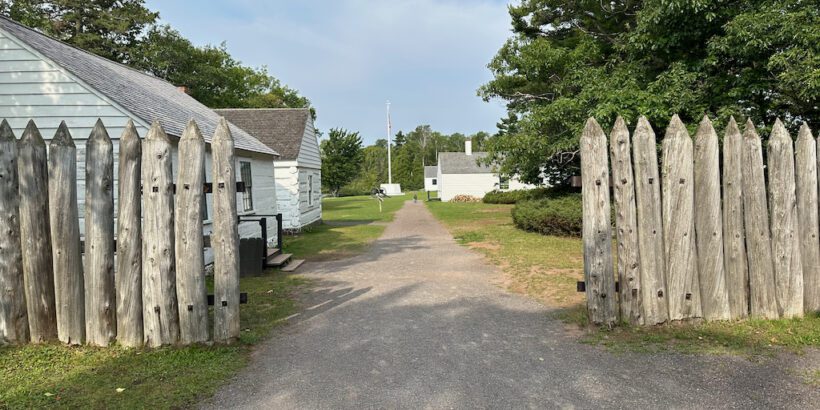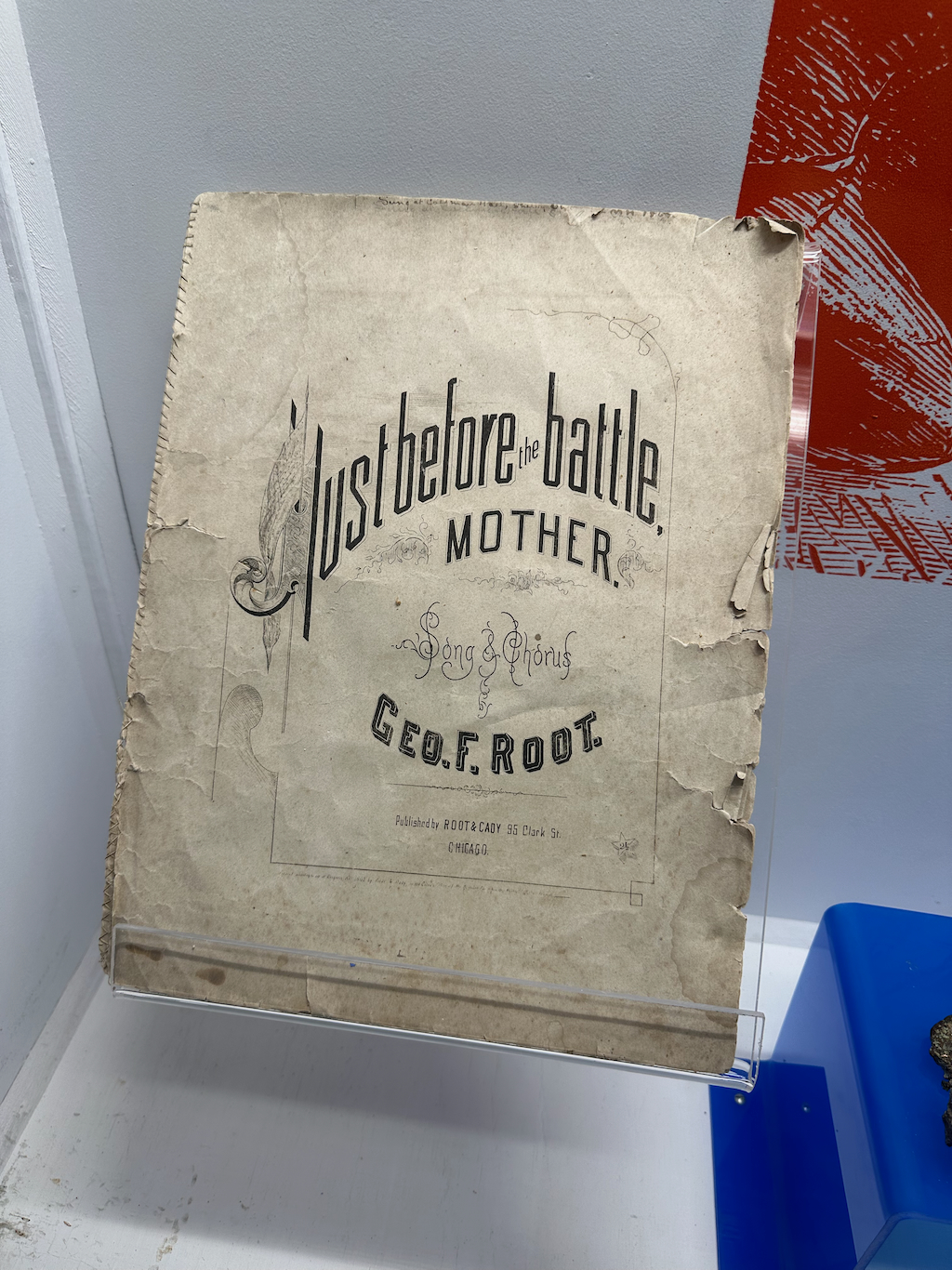Located near the tip of the Keweenaw Peninsula, Fort Wilkins Historic State Park offers a captivating journey back in time. Step into an era defined by the copper rush and uncertain relations with the local Native communities.
As you explore the well-preserved living quarters and structures like the old powder rooms, you’ll find yourself fully immersed in this historical period.
In this article, we’ve got all the essential information you need to make the most of your visit to Fort Wilkins Historic State Park.
Table of Contents
What is Fort Wilkins Historic State Park?
Fort Wilkins Historic State Park safeguards the meticulously restored Fort Wilkins, a military outpost from 1844, which earned a spot on the National Register of Historic Places in 1970.
Access to Fort Wilkins is complimentary, but it’s important to note that a Recreation Passport is mandatory for vehicle entry into the park. We purchased one online and it was not delivered in time so we just showed the receipt in our emails and they allowed to send.
Fort Wilkins Historic State Park Historical overview
The fort’s historical roots trace back to the early 1840s when a copper rush unfolded and prompted a rapid influx of fortune-seekers to the peninsula.
In response to potential disorder and violence concerns, along with the need to facilitate the transportation of vital supplies and copper, the U.S. government undertook the construction of the fort.
The stationed troops had a twofold purpose: assisting in local law enforcement and maintaining harmony between miners and the local Ojibwas.
In the controversial Treaty of La Pointe, the latter had recently relinquished extensive tracts of land, including a significant portion of the Upper Peninsula. Some Ojibwe opposed the treaty believing that they were giving up too much. Naturally there were concerns over potential conflicts with the natives.
So the fort was established in 1844, and the United States Army occupied it, albeit briefly.
That’s because it soon became evident that the fort’s presence was unnecessary, and it saw only a few years of active use.
Several factors contributed to this shift: the copper rush began moving south, the Chippewa had largely accepted the treaty they had previously agreed to, and the miners in the area were predominantly law-abiding.
After the conclusion of the American Civil War, the U.S. Army reoccupied Fort Wilkins from 1867 to 1870.
During this period, the fort accommodated Civil War infantry veterans. But eventually, the War Department decided that maintaining the post was too costly, leading to its closure in August 1870.
In 1848, construction commenced on the Copper Harbor Lighthouse complex, situated at the eastern tip of the landmass commonly referred to as Hays Point.
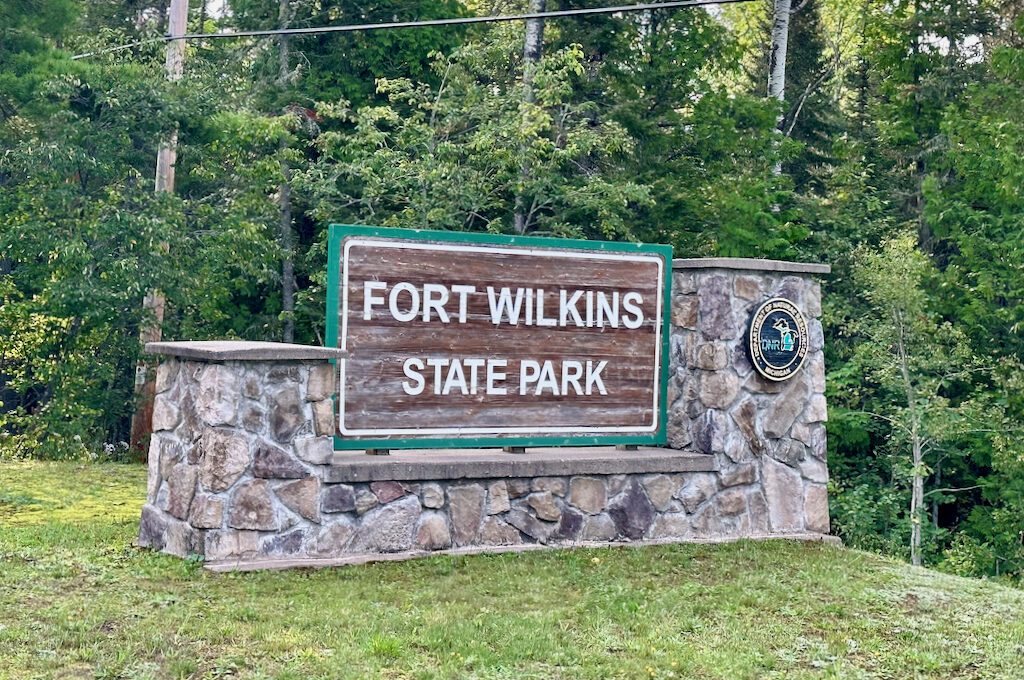
Experiencing Fort Wilkins Historic State Park
After making the drive from Houghton, we arrived early in the morning.
There was plenty of parking and from the parking lot it’s just a short walk to the park’s main structures.
This is a dog friendly location so as long as your dog is on a leash and you keep them outside of the interiors of the buildings, you are good to bring your furry friend. Our pup really enjoyed his time and there were several other dog owners out as well.
You’ll first come across a number of cabins, which is where the married enlisted men lived. They are furnished with historical furniture and/or interpretive exhibits, so you’ll be able to dive right into the history of this place.
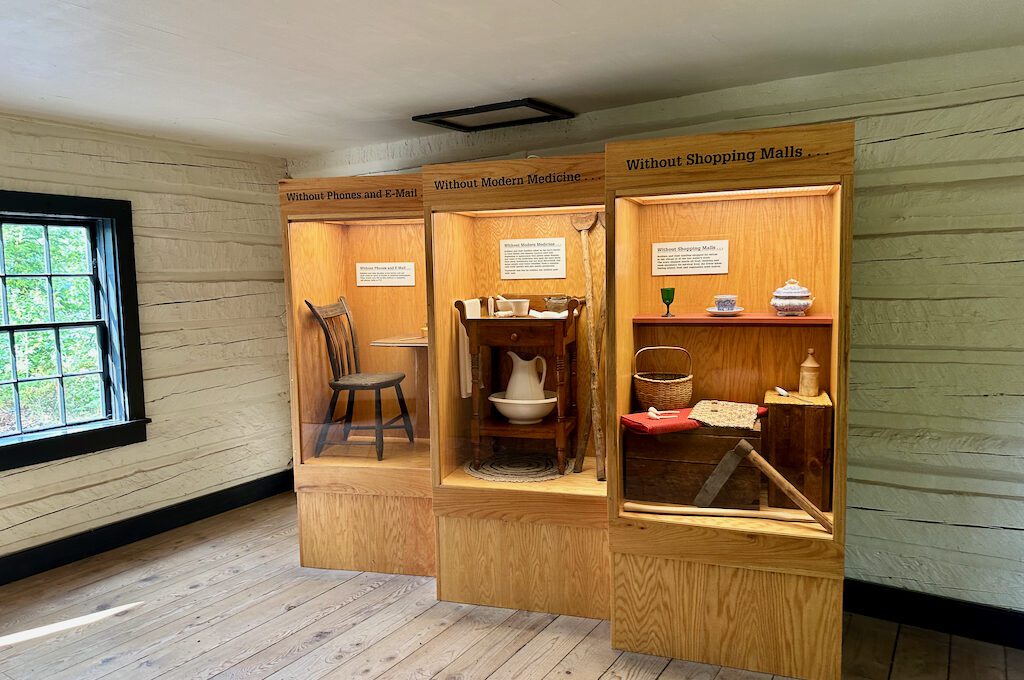
Take a stroll through these buildings and learn about what daily life was like on this remote fort, where winters were brutal.
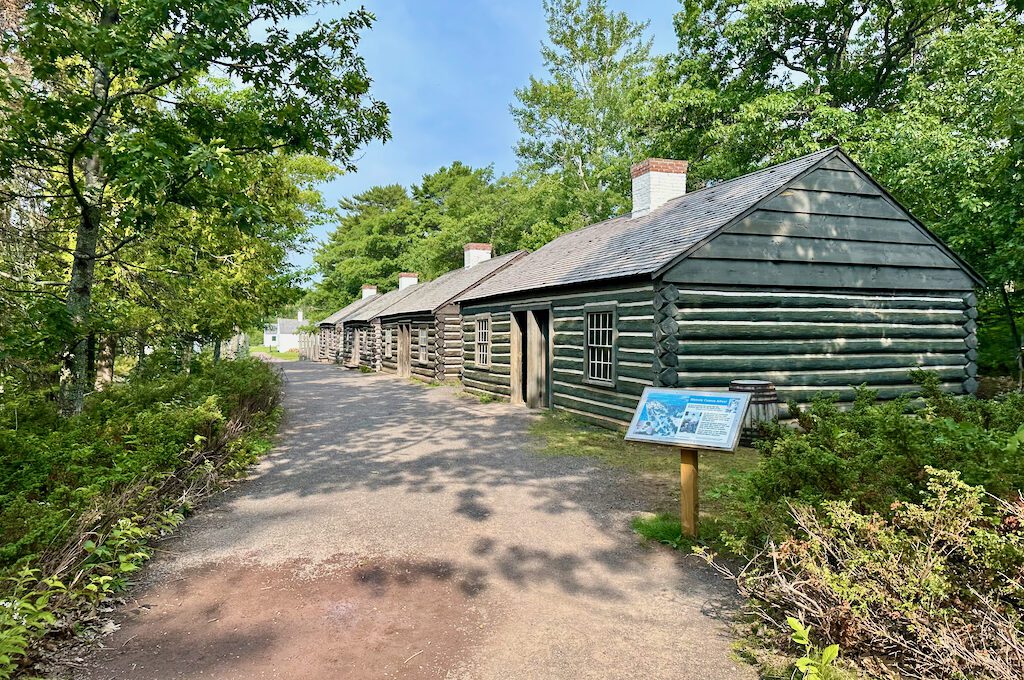
After exploring the cabins, your next stop is the fort itself, offering a splendid view of Lake Fanny Hooe, complete with a duo of canons overlooking the water.
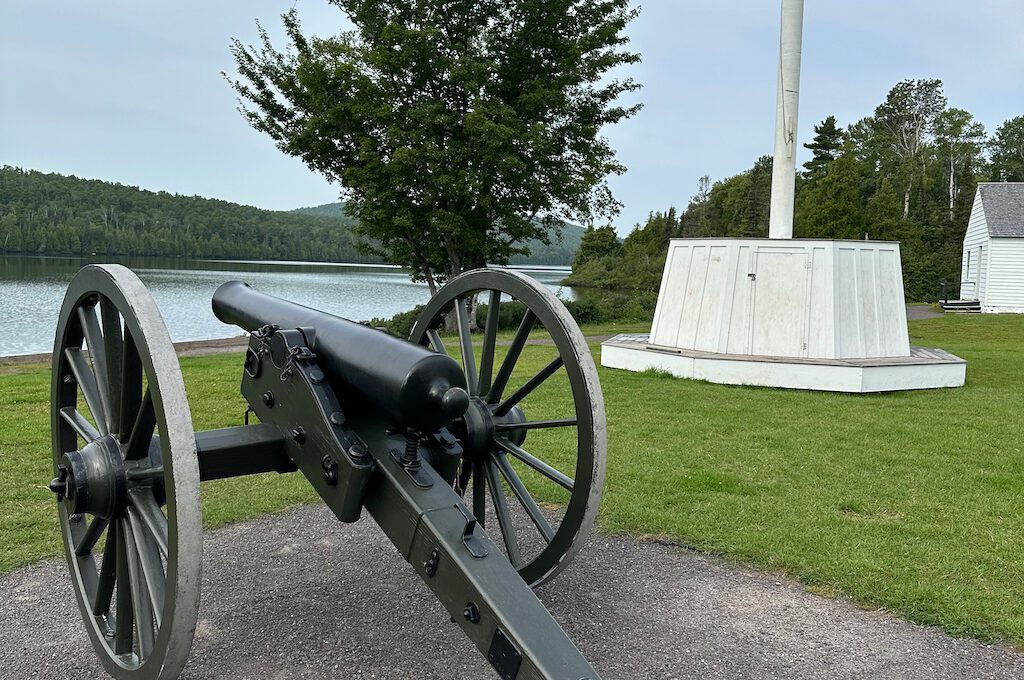
Here, you’ll encounter several structures arranged around a courtyard (called the Parade Grounds), and many of these buildings are open for exploration as well. I’d encourage you to get a map to help you get a sense of what these buildings were designed for. Try to hit them all if you can.
Some buildings have plexiglass panels you can look through while others will allow you to go inside of them and even head upstairs (watch your head).
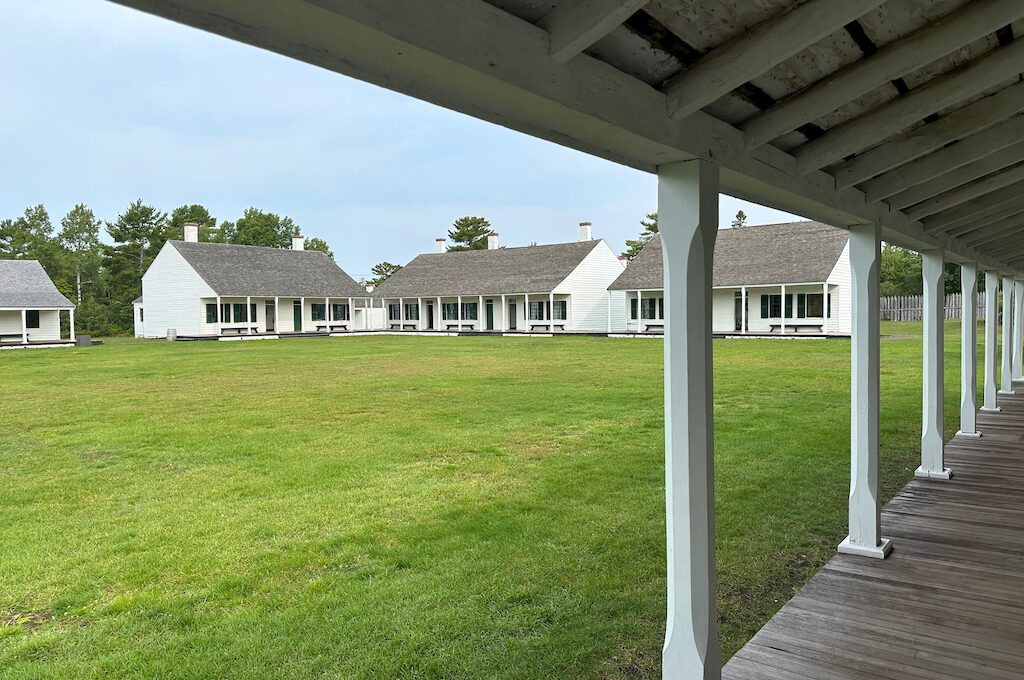
As you start to explore the grounds, you realize that they essentially had a mini city built out here.
In total, they built over 20 structures which included things like a guardhouse, powder magazine, officer’s quarters, barracks, mess halls, a hospital, storehouse, sutler’s store, bakery, blacksmith’s shop, and others.
Nineteen of twenty-four buildings survive, including twelve original structures.
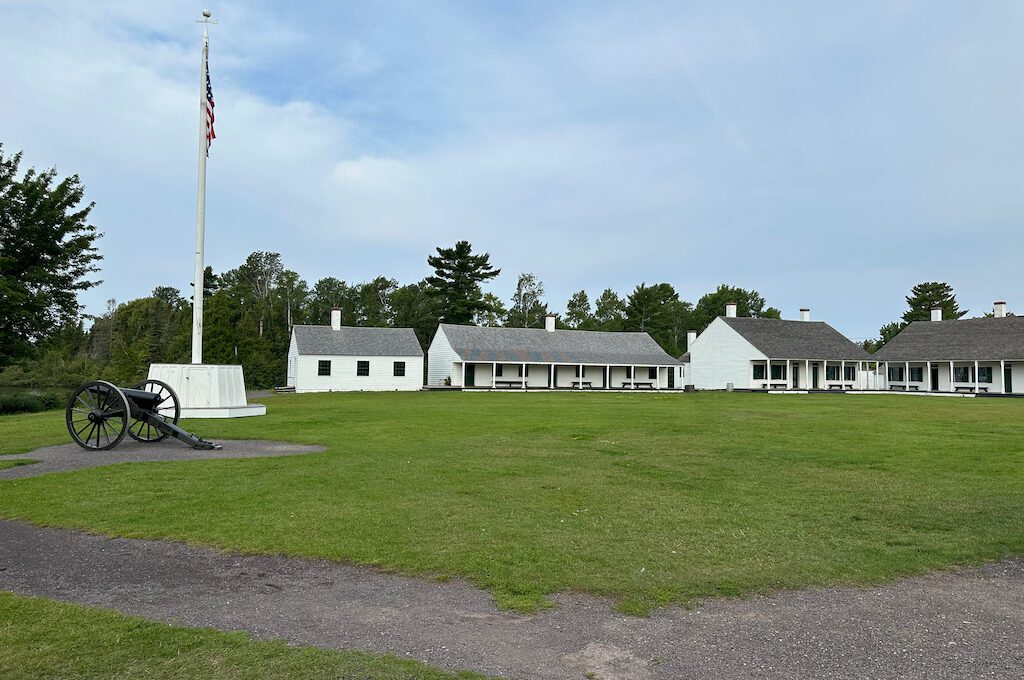
In each of these buildings, there is a story to be told about what life was like. Some of the rooms are intricately designed with real or recreated artifacts from over 100 years ago.
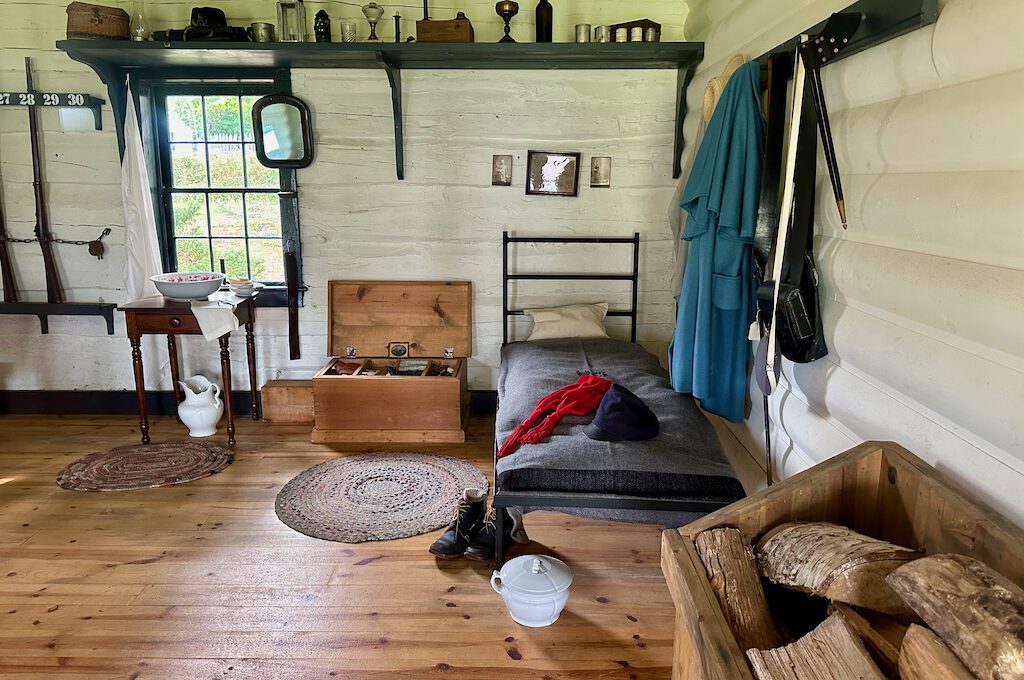
It’s pretty interesting to learn about how they performed certain basic duties like baking bread and the immersive recreations really do take you back to a different era.
You can find workers in period outfits that will role-play so feel free to ask them about “their life” on the frontier.
One thing is clear, it did NOT sound like the most ideal place to live.
Many of the soldiers were under paid for their manual labor and some of the conditions and work were substandard on the fort.
For example when it came to the blacksmiths one officer said: “I would not have such persons work for me on a private enterprise if they worked for nothing.”
In the wintertime, when the rivers transformed into icy barriers, the fort found itself isolated from the outside world. Mail deliveries relied on carriers braving the snow-covered terrain on snowshoes. So you can imagine life was pretty rough.
Still, they found ways to pass the time whether that was through literature and hunting or gambling and drinking.
As you enter the hospital, be prepared to cringe at the peculiar medical practices from back in the day. Brace yourself for tales of “bleeding” – a treatment that’ll make you thankful for modern medicine and slightly relieved you weren’t born in that era!
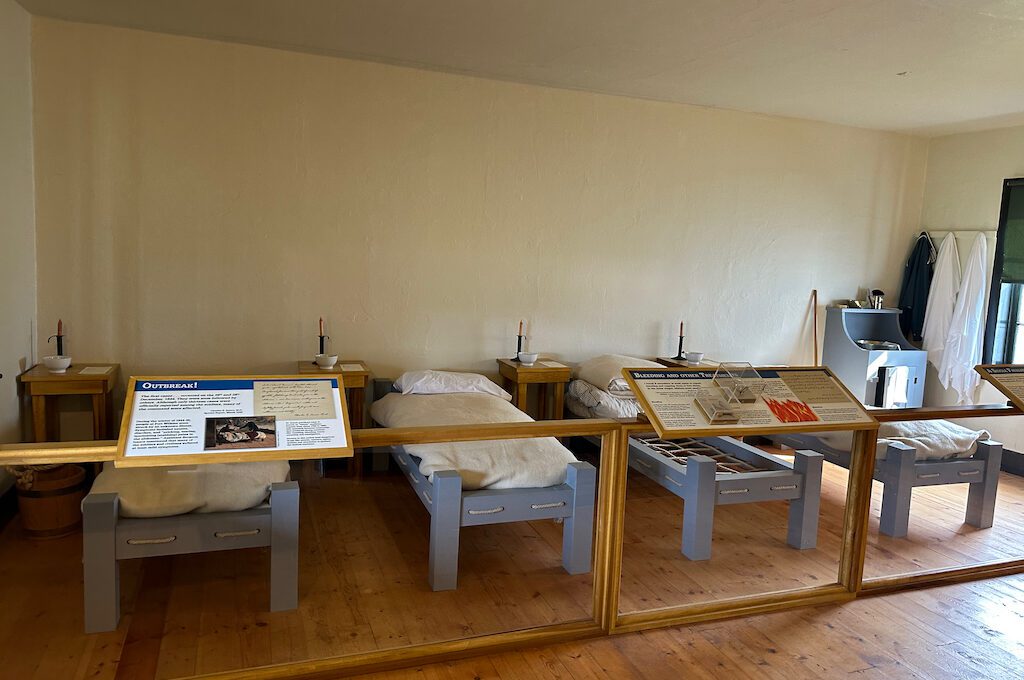
In addition to learning about life on the fort’s history, there’s a lot of exhibits that go into detail about the history of the army during this time. It was interesting to learn about certain facts like that immigrants made up one half of the standing army during this time (1840 to 1870).
After checking out the structures, you can make your way across Fanny Hooe Creek where there are multiple bridges. It’s a really scenic creek and a great place for some photo ops!
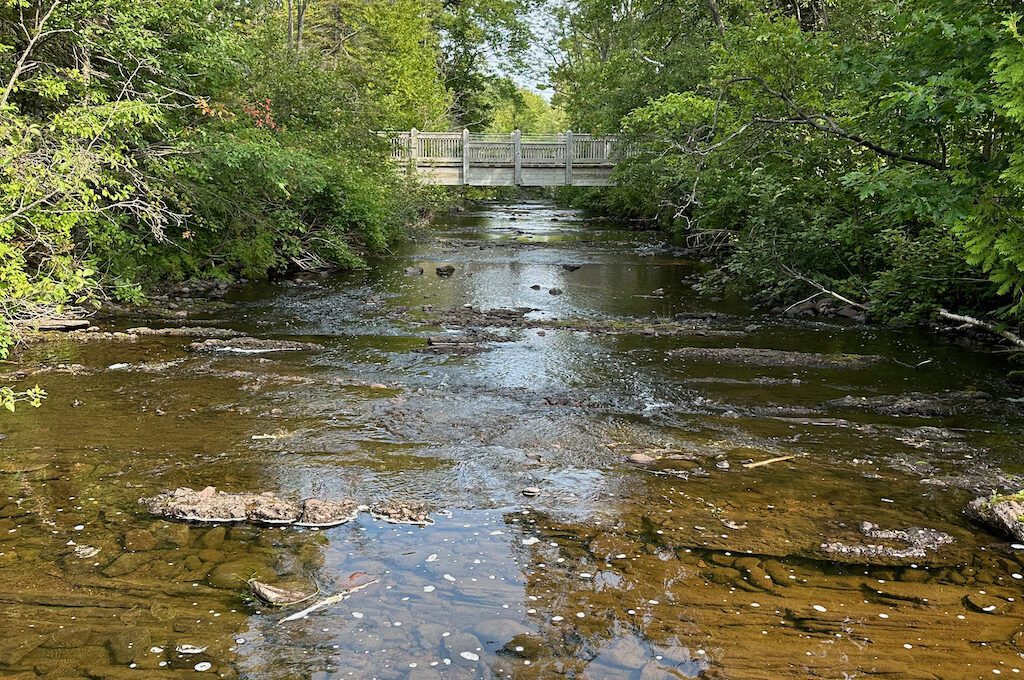
You can continue down on some trails that will take you throughout the park and to other areas where you’ll find campgrounds and other facilities.
After successfully crossing the creek, our journey led us to the Copper Harbor Lighthouse overlook, a spot we highly recommend checking out.
Constructed in 1848 and later replaced by the current structure in the 1860s, the Copper Harbor Lighthouse was one of the earliest beacons on Lake Superior.
Besides enjoying the lighthouse’s historical charm, this location offers spectacular views of the rugged, picturesque shores. Additionally, you can delve into the fascinating story of the shipwreck of the Brig Astor, which burned for weeks off these shores.
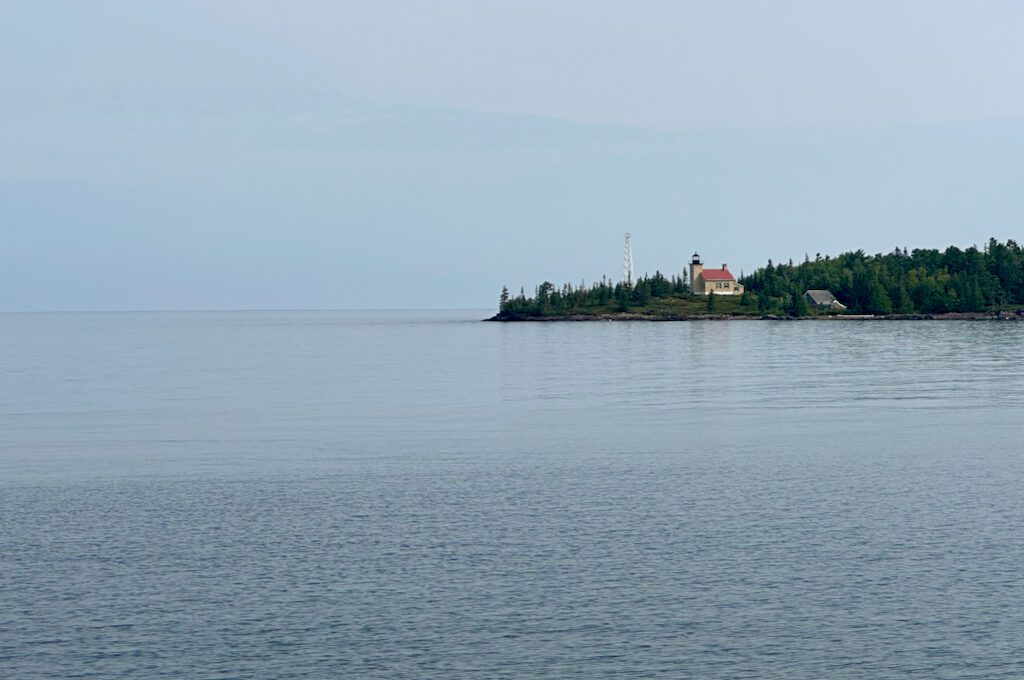
Final word
Fort Wilkins stands out as an intriguing historical site because, unlike many forts where visitors typically immerse themselves in reliving past battles, Fort Wilkins never experienced a single conflict and had a relatively brief period of active service. Nonetheless, it offers a captivating glimpse into the past, providing visitors with the unique opportunity to gain insights into life on the 1800s frontier fort.
Daniel Gillaspia is the Founder of UponArriving.com and the credit card app, WalletFlo. He is a former attorney turned travel expert covering destinations along with TSA, airline, and hotel policies. Since 2014, his content has been featured in publications such as National Geographic, Smithsonian Magazine, and CNBC. Read my bio.

